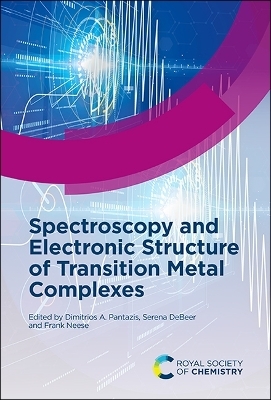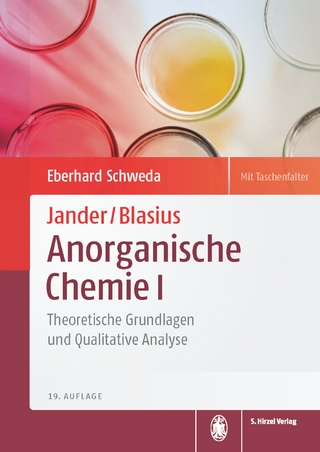
Spectroscopy and Electronic Structure of Transition Metal Complexes
Royal Society of Chemistry (Verlag)
978-1-78801-424-3 (ISBN)
- Keine Verlagsinformationen verfügbar
- Artikel merken
The combination of spectroscopy and theory has developed considerably in the past two decades. Computational techniques and theoretical analysis to extract electronic structure information from spectroscopy has become a crucial aspect of modern research in chemistry and materials science.
This book provides a comprehensive and up-to-date resource on spectroscopic methods used in transition metal chemistry and explains the relationships between experimental techniques and electronic structure. Chapters cover topics including computational chemistry; ligand field theory; magnetochemistry; and optical, vibrational, NMR and EPR spectroscopy.
Edited and written by world experts in the field, this unique volume is valuable to students of all levels and serves as a reference for researchers in physical inorganic chemistry, (bio)inorganic chemistry and spectroscopy.
Dimitrios A. Pantazis obtained his PhD in Computational Chemistry at the University of York in 2006 and subsequently carried out postdoctoral research in the University of Glasgow, the University of Bonn, and the Max Planck Institute for Bioinorganic Chemistry. He is the recipient of the Ernst-Haage Prize in Bioinorganic Chemistry (2010). In 2011 he joined the Max Planck Institute for Chemical Energy Conversion as a group leader in the Department of Molecular Theory and Spectroscopy. His research interests focus on the application of computational chemistry and theoretical spectroscopy to inorganic and bioinorganic chemistry, with particular focus on biological and artificial photosynthesis. Serena DeBeer received her B.S. in Chemistry at Southwestern University in 1995 and her Ph.D. from Stanford University in 2002. From 2002 to 2009 she was a staff scientist at the Stanford Synchrotron Radiation Laboratory before moving to a faculty position at Cornell. In 2011 she joined the Max-Planck-Institute for Chemical Energy Conversion in Mulheim an der Ruhr, Germany, as a Professor and Research Group Leader. She is the recipient of a Sloan Fellowship (2011), a Kavli Fellowship (2012), a European Research Council Consolidator Award (2013), and the Society of Biological Inorganic Chemistry Early Career Award (2015). Since 2017 she heads the Department of Inorganic Spectroscopy at the Max Planck Institute for Chemical Energy Conversion. Her primary research interests include the development and application of X-ray based spectroscopy to examine small molecule activation in chemical and biological catalysis. Frank Neese obtained his PhD in biology (Konstanz, 1997) in the group of Prof. Peter Kroneck and then carried out a postdoctoral research at Stanford with Prof. Edward I. Solomon (until 1999). After his habilitation (Konstanz, 2001), he joined the MPI for Radiation Chemistry (Mulheim, 2001) before becoming chair of theoretical chemistry at the University of Bonn (2006). He currently heads the Department of Molecular Theory and Spectroscopy at the MPI for Chemical Energy Conversion (Mulheim, 2011). His research interests include experimental spectroscopy, computational chemistry, and theoretical method development, with a focus on transition metals and spectroscopic properties.
Introduction to Computational Chemistry; Chemical Concepts and Computations; Ligand Field Theory; Optical Spectroscopy; Vibrational Spectroscopy; Magnetochemistry; Introduction to Electron Paramagnetic Resonance Spectroscopy; Advanced Electron Paramagnetic Resonance Spectroscopy; Moessbauer Spectroscopy; Paramagnetic Nuclear Magnetic Resonance Spectroscopy; X-ray Spectroscopy; Magnetic Circular Dichroism Spectroscopy
| Erscheinungsdatum | 08.01.2019 |
|---|---|
| Zusatzinfo | No |
| Verlagsort | Cambridge |
| Sprache | englisch |
| Maße | 156 x 234 mm |
| Themenwelt | Naturwissenschaften ► Chemie ► Analytische Chemie |
| Naturwissenschaften ► Chemie ► Anorganische Chemie | |
| Naturwissenschaften ► Chemie ► Physikalische Chemie | |
| ISBN-10 | 1-78801-424-3 / 1788014243 |
| ISBN-13 | 978-1-78801-424-3 / 9781788014243 |
| Zustand | Neuware |
| Haben Sie eine Frage zum Produkt? |
aus dem Bereich


